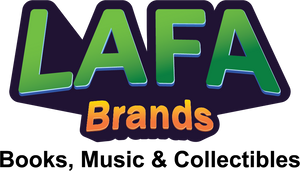
The Code Breaker
The bestselling author of Leonardo da Vinci and Steve Jobs returns with a “compelling” (The Washington Post) account of how Nobel Prize winner Jennifer Doudna and her colleagues launched a revolution that will allow us to cure diseases, fend off viruses, and have healthier babies.
When Jennifer Doudna was in sixth grade, she came home one day to find that her dad had left a paperback titled The Double Helix on her bed. She put it aside, thinking it was one of those detective tales she loved. When she read it on a rainy Saturday, she discovered she was right, in a way. As she sped through the pages, she became enthralled by the intense drama behind the competition to discover the code of life. Even though her high school counselor told her girls didn’t become scientists, she decided she would.
Driven by a passion to understand how nature works and to turn discoveries into inventions, she would help to make what the book’s author, James Watson, told her was the most important biological advance since his codiscovery of the structure of DNA. She and her collaborators turned a curiosity of nature into an invention that will transform the human race: an easy-to-use tool that can edit DNA. Known as CRISPR, it opened a brave new world of medical miracles and moral questions.
The development of CRISPR and the race to create vaccines for coronavirus will hasten our transition to the next great innovation revolution. The past half-century has been a digital age, based on the microchip, computer, and internet. Now we are entering a life-science revolution. Children who study digital coding will be joined by those who study genetic code.
Should we use our new evolution-hacking powers to make us less susceptible to viruses? What a wonderful boon that would be! And what about preventing depression? Hmmm…Should we allow parents, if they can afford it, to enhance the height or muscles or IQ of their kids?
After helping to discover CRISPR, Doudna became a leader in wrestling with these moral issues and, with her collaborator Emmanuelle Charpentier, won the Nobel Prize in 2020. Her story is an “enthralling detective story” (Oprah Daily) that involves the most profound wonders of nature, from the origins of life to the future of our species.
- In Stock Out of Stock
- Simon & Schuster
- 9781982115852
- March 9, 2021
- Stock Photo
- 560
- L 24.3cm x W 16.5cm x H 4.3cm
Book Condition Notes
New: A brand-new, unused, unread copy in perfect condition.
Like New: A copy that looks unread and in perfect condition. Dust jacket is intact, with no nicks or tears. The spine has no signs of creasing. Pages are clean and are do not have any notes or folds of any kind. May have a remainder mark. (usually black or red in colour and is usually a dot or line on the bottom of the book on the page edges).
Very Good: A copy that has been read but is in great condition. May have slight cosmetic defects such as marks, wears, cuts, bends and crushes on the cover, pages, spine and dust jacket if applicable. Pages and dust cover (if applicable) are intact and do not have any notes or highlighting. The spine remains undamaged. May have a remainder mark (usually black or red in colour and is usually a dot or line on the bottom of the book on the page edges).
Good: A copy that has been read but in clean condition. The spine, cover, pages and dust jacket (if applicable) may show signs of wear such as marks, wears, cuts, bends and crushes. Pages and dust cover (if applicable) are intact and do not have any notes or highlighting. May have a remainder mark (usually black or red in colour and is usually a dot or line on the bottom of the book on the page edges).
Acceptable: All pages are intact; the cover is intact. The spine, cover, pages and dust jacket (if applicable) may show signs of considerable wear such as marks, wears, cuts, bends and crushes. Pages can include limited notes in pen or in highlighter, but the notes do not obscure the text. May have a remainder mark (usually black or red in colour and is usually a dot or line on the bottom of the book on the page edges).

